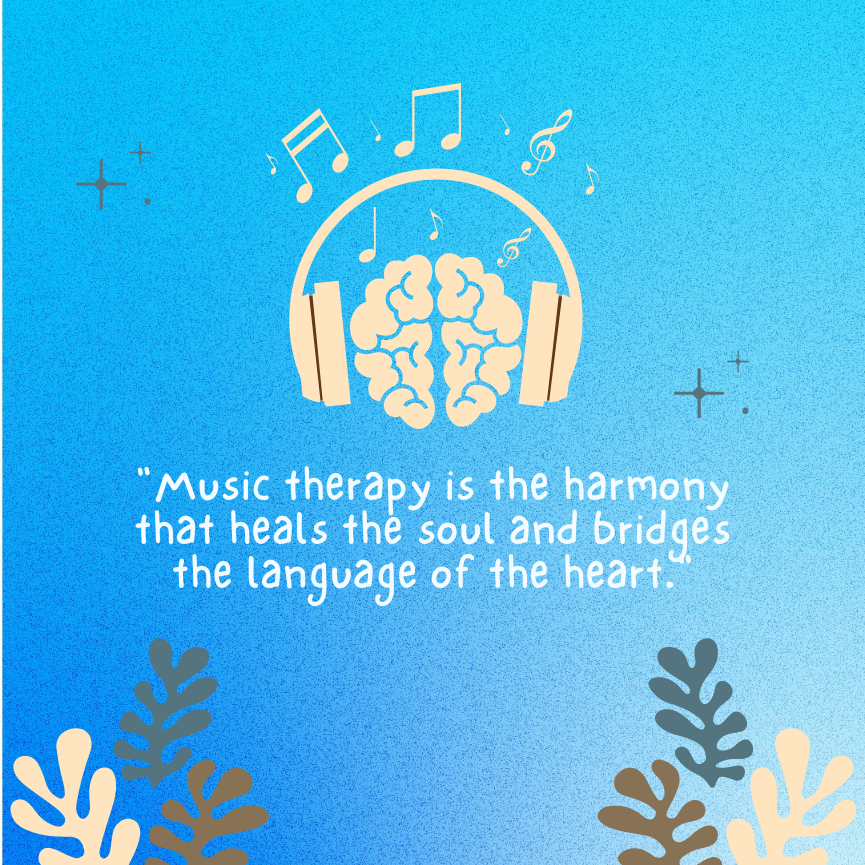
Unveiling The Harmonious World: The Therapeutic Power Of Music In Autism Communication
"Music therapy is not just about notes and melodies; it's a harmonious bridge that empowers individuals with autism to find their voice, express their emotions, and connect with the world in ways words cannot."
In the intricate tapestry of human existence, communication stands as a fundamental thread that weaves connections and fosters understanding. However, for individuals on the autism spectrum, navigating the realm of communication can be a unique challenge. In this extensive exploration, we delve into the Therapeutic Power Of Music In Autism Communication.
Autism and Communication Challenges
Autism Spectrum Disorder (ASD) is a neurodevelopmental condition characterized by a range of challenges related to social interaction, repetitive behaviors, and communication. The communication difficulties faced by individuals with autism often manifest as challenges in verbal and non-verbal expression, making it essential to explore alternative avenues for fostering meaningful connections.
The Enchanting Symphony of Music
Enter the enchanting world of music – a realm where notes, melodies, and rhythms come together to create a universal language that transcends barriers. Music, with its inherent ability to evoke emotions and stimulate the senses, has emerged as a powerful tool in addressing communication challenges among individuals with autism.
Unlocking the Potential: How Music Aids Communication in Autism:
Sensory Stimulation and Engagement
Music engages multiple sensory modalities, providing a rich and dynamic experience. For individuals with autism, who may have heightened or diminished sensitivities to sensory stimuli, music offers a controlled and structured environment for sensory exploration.
Expressive Outlets through Creative Arts
The creative expression facilitated by music allows individuals with autism to communicate in ways that extend beyond traditional verbal communication. Through singing, playing instruments, or even rhythmic movements, individuals can find alternative outlets for self-expression.
Enhanced Emotional Regulation
Music has a profound impact on emotions, and its therapeutic use has been linked to improved emotional regulation in individuals with autism. By tapping into the emotional resonances of music, individuals can learn to identify and manage their own emotions, paving the way for more effective communication.
Social Connection and Interaction
Group music activities create a supportive and inclusive environment, fostering social connections among individuals with autism. Shared musical experiences provide a platform for communication, collaboration, and the development of social skills in a structured setting.
Transformative Impact of Therapeutic Power Of Music In Autism Communication
Real-life Success Stories
Case Study: Sarah's Journey to Expression
Sarah, a non-verbal teenager with autism, struggled to communicate her emotions and needs. However, during music therapy sessions, she discovered a love for drumming. Through rhythmic beats, Sarah found a voice she never knew she had. Now, she expresses herself confidently through music, enhancing her communication skills and fostering connections with those around her.
Inspiring Progress: Alok Finds his Voice
Alok, a young boy on the autism spectrum, faced challenges in social interactions and verbal communication. His parents enrolled him in music therapy, where he learned to play the guitar. Over time, Alok's confidence grew, and he began using music to communicate his thoughts and feelings. Today, he performs at local events, showcasing the transformative power of music in his communication journey.
Practical Strategies: Incorporating Music into Daily Life for Autism Communication
Music Therapy Sessions: Personalized Approach
Music therapy sessions offer tailored approaches to address communication goals in individuals with autism. Trained music therapists use techniques like rhythm, melody, and lyrics to engage clients and enhance their verbal and non-verbal communication skills. Through evidence-based practices, these sessions create meaningful connections and promote communication breakthroughs.
Incorporating Music in Education: Classroom Connections
Integrating music into educational settings proves beneficial for individuals with autism. Educators can use music as a tool to enhance communication skills by incorporating songs, rhythm exercises, and interactive musical activities into lessons. Music creates a conducive environment for learning, fostering engagement and improving communication within the classroom.
Family-Centric Music Activities: Building Bonds
Families can incorporate music into daily routines to support communication development in children with autism. Creating personalized playlists with favorite songs, engaging in sing-along sessions, and introducing musical instruments at home can promote expression and connection. These family-centric activities not only enhance communication skills but also strengthen bonds and create joyful moments.
The Future of Music in Autism Communication
As we navigate the intricate landscape of autism and communication, the therapeutic role of music continues to evolve. Discuss ongoing research and advancements in the field, shedding light on how technology and innovation are expanding the possibilities for harnessing the power of music in communication interventions.
In the symphony of life, where communication serves as the melody, individuals with autism find solace and empowerment through the therapeutic embrace of music. As we continue to unravel the mysteries of the human mind, the harmonious interplay between music and autism communication stands as a testament to the transformative potential of sound. Let us embark on a journey where every note becomes a bridge, connecting hearts and minds in the beautifully diverse symphony of humanity.
